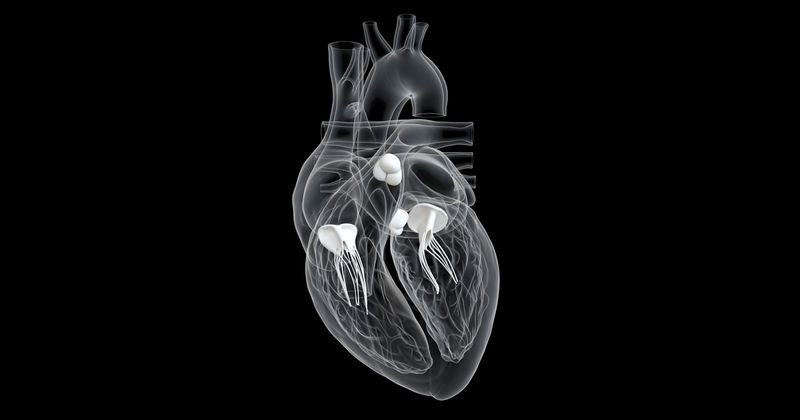Self-expanding vs. balloon-expanding valve 1-year outcomes mostly similar
In transcatheter aortic valve replacement for severe aortic stenosis, there were similar 1-year event rates between a self-expanding valve and a balloon-expanding valve except for stroke, which was higher with the balloon-expanding valve.
Investigators of the SOLVE-TAVI trial, presented at TCT Connect, also found that local anesthesia with conscious sedation conferred similar event rates and time-related safety compared with general anesthesia.

As Healio previously reported, in the 30-day outcomes for this trial, a self-expanding valve (CoreValve Evolut R, Medtronic) was equivalent to a balloon-expandable valve (Sapien 3, Edwards Lifesciences) for 30-day outcomes in patients with symptomatic aortic stenosis who underwent transfemoral TAVR.
In this 2x2 randomized trial, Hans-Josef Feistritzer, MD, PhD, cardiologist in training at Heart Center Leipzig at University Hospital in Leipzig, Germany, and colleagues analyzed data from patients with symptomatic aortic stenosis who were indicated for TAVR. Researchers compared a self-expanding valve (n = 219; mean age, 82 years; 48% men) with a balloon-expanding valve (n = 219; mean age, 82 years; 50% men), in addition to local (n = 222) and general anesthesia strategies (n = 225).
The primary endpoint was a composite of all-cause mortality, stroke, moderate/severe paravalvular leak and permanent pacemaker implantation at 30 days. There were several secondary endpoints, including individual components of the primary endpoint at 30 days, 6 months and 12 months.
At 1 year, the difference between the self-expanding valve and the balloon-expanding valve regarding the composite endpoint was not statistically significant (41.9% vs. 40.4%, respectively; HR = 0.95; 95% CI, 0.71-1.28). Differences in the individual components of the endpoint were also not statistically significant except for stroke, which occurred more often in patients assigned the balloon-expanding valve compared with the self-expanding valve (1% vs. 6.9%; HR = 7.13; 95% CI, 1.62-31.32).
“The possible explanation for this [stroke] finding might be more severe aortic root calcifications in the group receiving the balloon-expanding valve, although the baseline characteristics, frailty, the risk score and age were similar between both groups,” Feistritzer said during the discussion at the press conference. “We need more post hoc analyses, which are already planned, to analyze possible confounders of this finding, for instance, carotid stenosis. Also we must look more closely to echocardiographic findings, including calcifications of the aortic root.”
Based on echocardiographic findings, patients assigned the self-expanding valve had improved mean aortic valve gradient (6 mm Hg vs. 10 mm Hg; median difference, 4; 95% CI, 3-5; P < .001) and maximum aortic valve gradient (12 mm Hg vs. 19 mm Hg; median difference, 7; 95% CI, 5-9; P < .001) at 1 year compared with the balloon-expanding valve. There were also differences in aortic valve area between the self-expanding and balloon-expanding valve groups, although they were not statistically significant (1.9 cm2 vs. 1.7 cm2, respectively; median difference, 0.2; 95% CI, 3 to 0; P = .063).
At 1 year, there were no differences in outcomes between the local anesthesia and general anesthesia groups, including all-cause mortality (15.2% vs. 19.4%, respectively), CV mortality (0.9% vs. 1.4%, respectively), stroke (3% vs. 4.9%, respectively) and MI (1% vs. 0.5%, respectively). There were also no differences between both groups for infection requiring antibiotics at 6 months (17.7% vs. 18.8%, respectively), acute kidney injury (12.2% vs. 11.7%, respectively) and time-related safety (17.6% vs. 18.8%, respectively).
“There was no significant difference in all-cause mortality, but interestingly regarding all-cause mortality, the Kaplan-Meier curves started to separate after approximately 4 months, while the Kaplan-Meier curves were equal for stroke,” Feistritzer said during the press conference. “[The Kaplan-Meier curves] were also similar for myocardial infarction, infections requiring antibiotic treatment and acute kidney injury.”

During the discussion at the press conference, Susheel K. Kodali, MD, director of the Structural Heart and Valve Center at NewYork-Presbyterian/Columbia University Medical Center, mentioned the importance of these device vs. device studies.
“One of the challenges in the surgical literature, whenever you do surgery, the interaction between the surgical valve and the patient’s anatomy is the same because you remove the anatomy, but each TAVR device interacts with the anatomy differently, how it crosses the arch, how it interacts with the annulus, the calcium, the root, everything,” Kodali said. “There may be significant differences between groups, and these studies are important.”
Also at the press conference, Chad Rammohan, MD, director of the cardiac catheterization laboratory at Sutter Health in Mountain View, California, discussed the historical perspective on general anesthesia.
“If you think about these, this is how everybody used to do it, and we’ve all changed,” Rammohan said. “I’m commending them for doing a randomized controlled trial for this because there’s been a lot in the literature of single-center experiences with sedation. I’ve converted completely to conscious sedation, and it’s moving in the registry up to 60% and 70%. We now have randomized controlled data showing it’s safe. The trends are actually improved outcomes, and there’s no price to pay for leaving general anesthesia. This confirms our data. It’s going to move the country and the world further to conscious sedation.”


